48 Hours in Jerusalem: Recommended 2-Day Itinerary
Home to three of the great world faiths - Christianity, Judaism and Islam - Jerusalem is arguably one of the holiest cities on the planet. No surprise then that millions of visitors flock to it, to worship in Jerusalem churches, synagogues and mosques, explore its endless historical sites, learn more about its conquests and ancestors or just to soak in the atmosphere of this extraordinary place. To do justice to Jerusalem, you’d need many days if not weeks, to wander the city but if you’re short of time, and want to see as much as you can, then - providing you rise early (to avoid the long queues) and put on some sturdy footwear - you can pack in a lot in a couple of days.
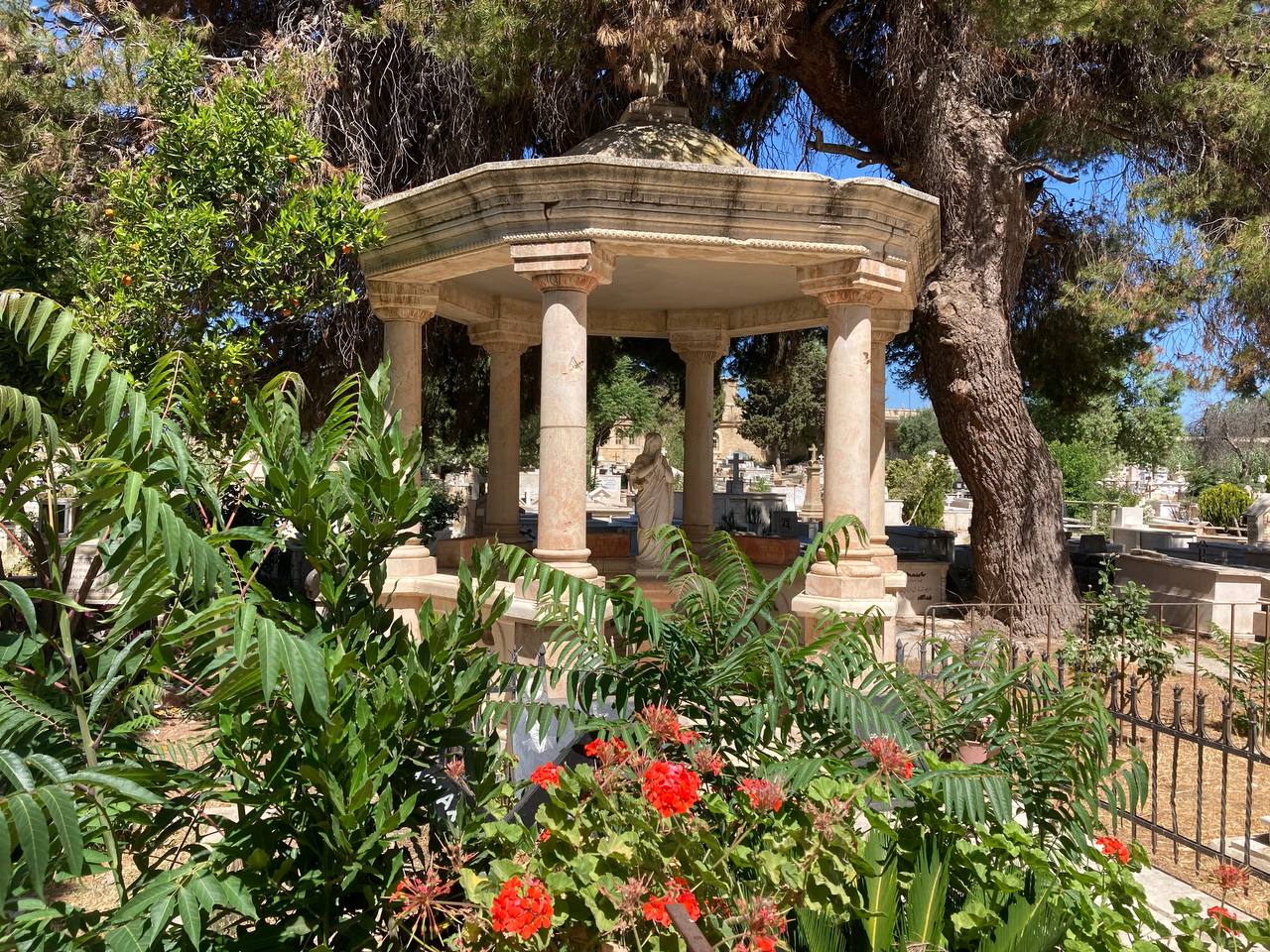
Catholic Cemetery, Mount Zion, Jerusalem. Photo credit: © Sofia Emeliyanova
Getting Around Jerusalem
In terms of getting around, the new and modern light railway is a joy to use and, of course, within the Old City, you’re confined to walking anyway. Consider taking part in the best-reviewed Jerusalem tours if you need some fellow travelers. On a practical level, we’d advise dressing modestly (long trousers for men and skirts or dresses below the knee/tops with sleeves for women) to show respect for many of the holy places. Finally, if possible, try and plan your trip between Monday-Thursday, since Friday-Sunday are days of rest for Muslims, Jews, and Christians respectively. Here, then, is our guide to Jerusalem in 48 hours...good luck and enjoy!
Day 1. The Old City and Temple Mount
The Old City has an atmosphere and energy that’s hard to describe - full of winding alleyways, exotic smells, places of worship on every corner, and 16th-century Ottoman walls, the city has immense religious and cultural symbolism. Its actual size is not large - it measures less than a square kilometer - but boasting thousands of years of history, and drought over tooth and nail by invaders, it really does pack a holy punch!
The Old City itself is divided into four quarters - Christian, Jewish, Muslim, and Armenian - with many buildings laying underneath the streets themselves. The present street plan dates back more or less to Byzantine times and is bisected by an east-west road (thus the four quarters).
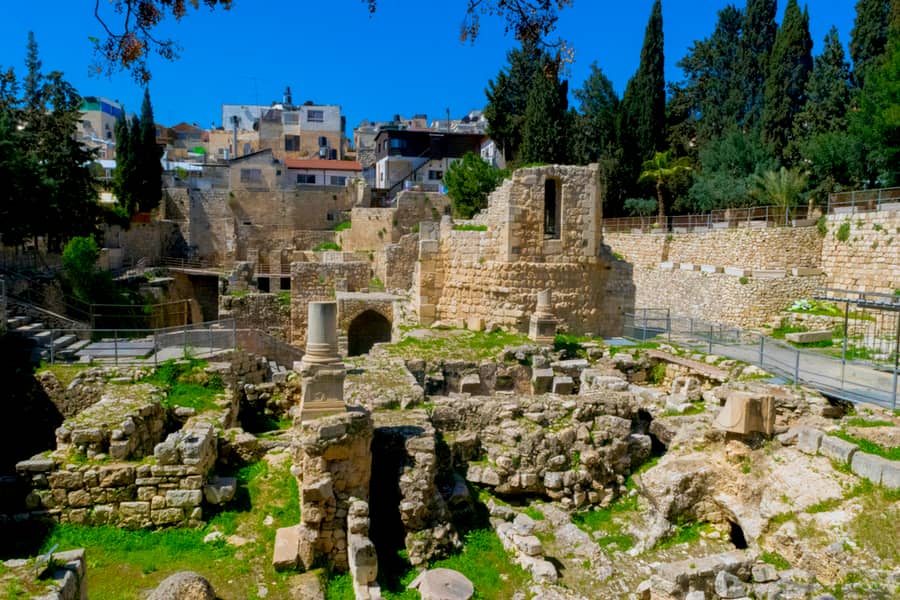
Bethesda Pools, Jerusalem. Photo credit: © Shutterstock
Christian Sites in the Old City of Jerusalem
Arriving through the Jaffa Gate, every visitor, whatever their faith, should walk the Via Dolorosa, which leads to the Church of the Holy Sepulchre. Treading the path Jesus walked, on his journey to the cross, is an extraordinary experience - stop at the different stations (marked on the ancient stone walls) and if you want to really soak up the atmosphere, go on Fridays at 3 pm, when the Franciscan Custodians of Holy Places lead a procession.
The Church of the Holy Sepulchre is the holiest site for Christians in the entire world - this is where Christ was crucified, buried, and resurrected and the atmosphere inside is extraordinary. (Fun fact: the walls of the church are inscribed with thousands of crosses, inscribed by Crusaders who traveled across Europe hundreds of years ago and slept in the church).
The Convent of the Sisters of Zion (a Catholic nunnery), the Garden Tomb (around the City Walls), the Coptic Orthodox Patriarchate, and St. Anne’s Church are also popular Christian sites within the Old City. For history buffs, consider taking a Jerusalem Half Day Tour and, at its conclusions, continuing on to explore alone.
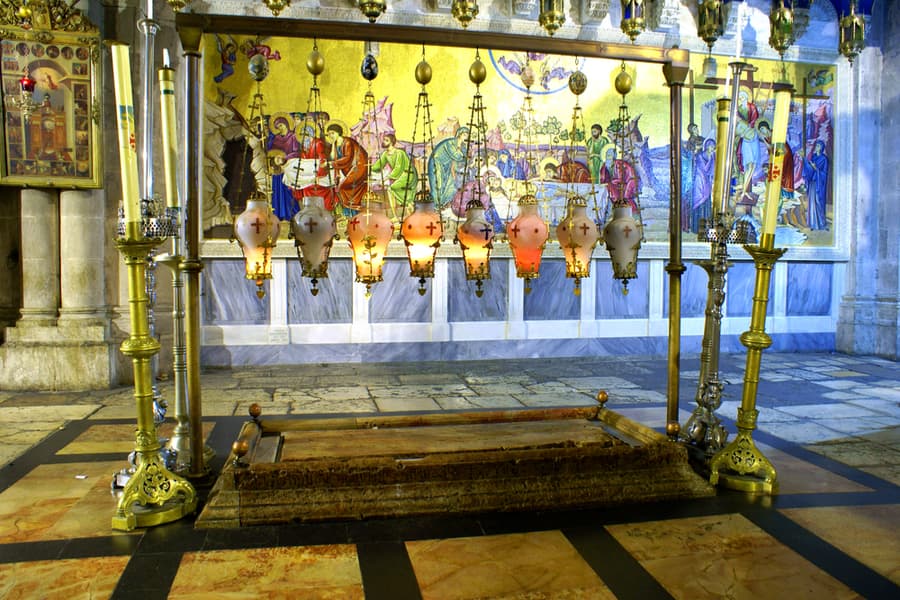
Church of the Holy Sepulchre. Photo credit: © Shutterstock
Jewish Sites in the Old City of Jerusalem
Without a doubt, a visit to the Western Wall (or “‘Kotel’ in Hebrew) is an experience no tourist ever forgets. Jews from across the globe come to pray here since it is their most holy site (the last retaining wall of the Second Temple built by Herod in Roman times). It is open to all, free and both Jews and non-Jews are permitted to walk close to the wall, pray there and place notes in the crevices of its walls.
As well as the Kotel, there is much to see in the Jewish quarter. Walk along the Cardo - the remains of a street that existed back in Roman-Byzantine times, where merchants sold their wares - and look out for the Madaba Map (an astonishing mosaic that depicts ancient Jerusalem).
A hidden gem often overlooked is the Hurva Synagogue. Built in 1700, burnt down in 1720 then re-inaugurated in 1864, this was one of the most impressive synagogues that stood in the Old City before 1948. Badly damaged by shelling in the War of Independence, it was subsequently demolished but in 2010 underwent major renovations to restore its beautiful exterior. Today it is possible to take a guided tour around it - look out for the tallest Ark of the Covenant in the world!
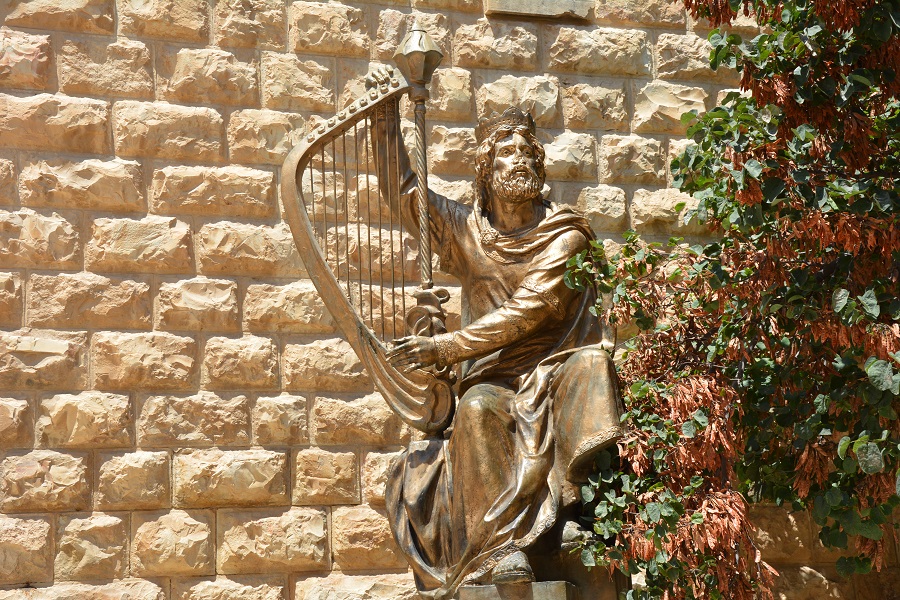
David Playing the Harp before Saul, Jerusalem. Photo credit: © Shutterstock
For archaeology lovers, the Burnt House is a must-visit. After the Six-Day War in 1967, Israeli archaeologists began digging in the Jewish Quarter of the Old City and found something quite astonishing - a house six meters below street level, concealed by a layer of ash. This ‘Burnt House’ dates back to the time of the Second Temple and is believed to have been the home of upper-class Jews. They were the Katros family and we know this because archaeologists found a stone weight, inscribed with their name on it.Not exactly in the Old City but not far away it is the City of David – and this can easily be joined on a City of David and Underground Jerusalem Tour.
Muslim Sites in the Old City of Jerusalem
A visit to the Temple Mount and the Dome of the Rock will be of particular interest to any Muslim since, after Mecca and Medina, the Dome of the Rock is Islam’s third most holy site. Constructed in 691-692 CE, it is instantly recognizable shimmering gold roof and blue-tiled exterior houses a sanctuary in which lies the Foundation Stone - where Mohammed (according to legend) ascended to heaven. Since non-Muslims are not allowed to enter the Dome of the Rock itself, we would recommend joining a tour of the area.
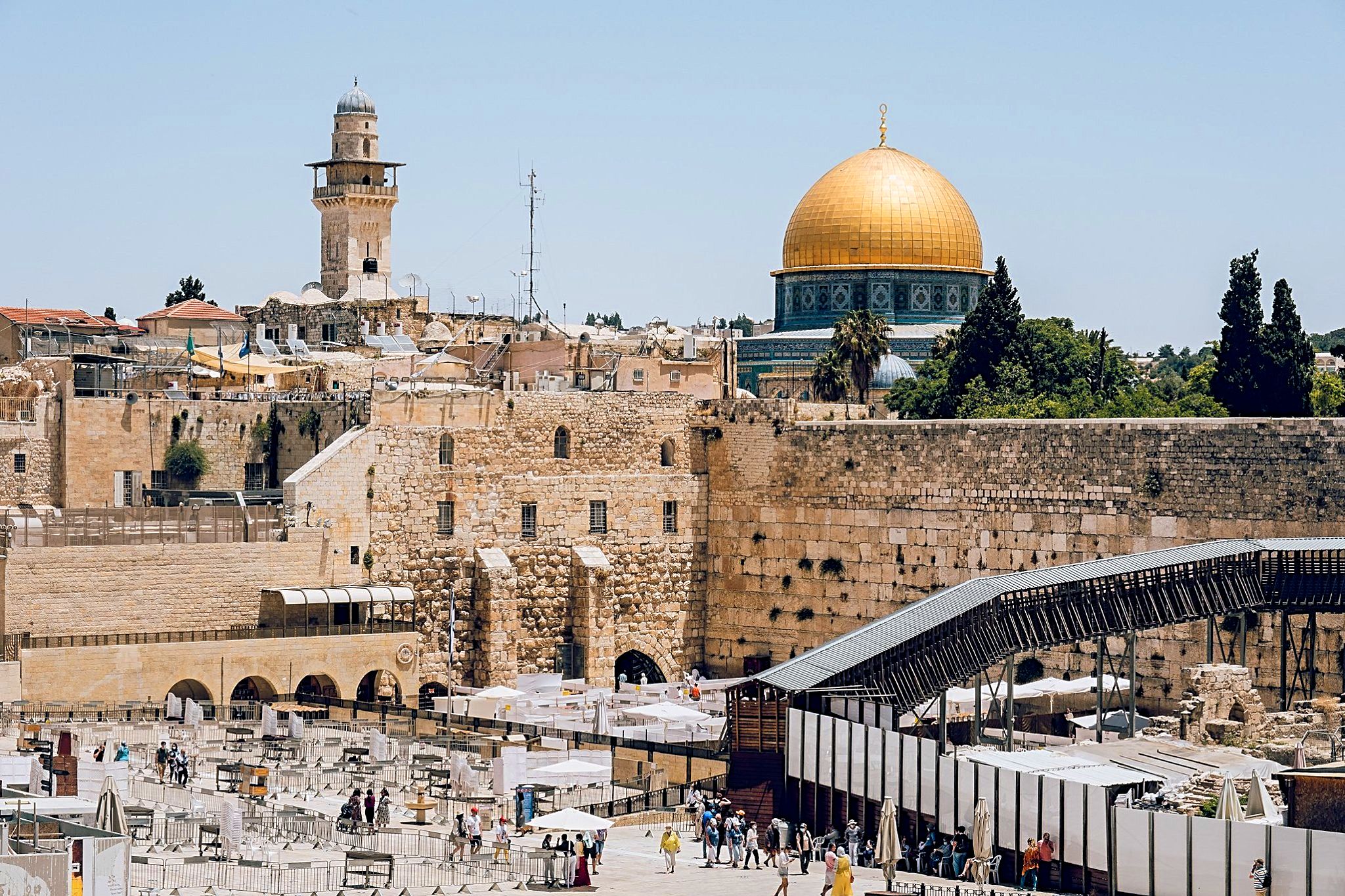
The Western Wall, Jerusalem. Photo credit: © Dmitry Mishin
After a power nap, spend the evening at one of Jerusalem’s excellent restaurants or bars in the New City, visit the Light and Sound Show at the Tower of David, or simply stroll through the fancy Mamilla Mall. Jerusalem is also home to the Cinematheque on Hebron Road, which hosts many documentary film festivals and boasts a lovely cafe, with light bites and fabulous views.
Day 2. The New City
Jerusalem is home to a number of excellent museums, two of which you could easily spend the entire day at. We would highly recommend both of them, the first being Yad Vashem - the national monument to the Holocaust - and the second the Israel Museum, which houses a spectacular collection of art, Judaica, sculptures, and the astonishing Dead Sea Scrolls. At a pinch, you could visit one in the morning and another in the afternoon... although that might be a little overwhelming.
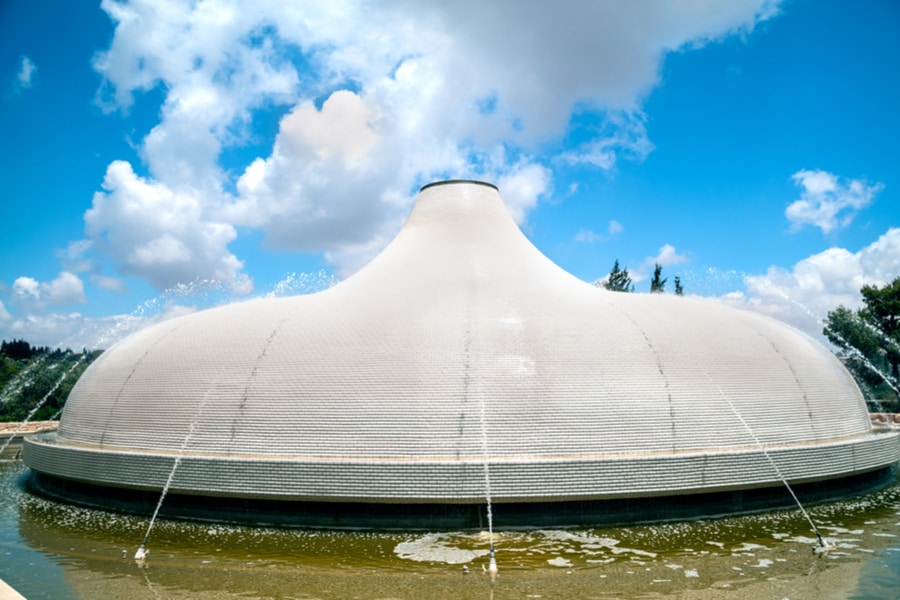
Shrine of the Book, Israel Museum, Jerusalem. Photo credit: © Shutterstock
Yad Vashem - The World Holocaust Remembrance Center
A visit to Yad Vashem is an extraordinary experience, leaving many moved to tears and all walking away with an indelible memory of their trip. Presenting the experience of the Holocaust (‘Shoah’ in Hebrew) from a uniquely Jewish experience, it takes the visitor on a remarkable journey, emphasizing the experiences of individuals through personal possessions, testimonies, and surviving artifacts. The museum actually contains over 27,000 items that were donated by survivors over the years, including chess sets and the distinctive yellow stars that Jews were forced to pin to their clothes.
Visitors walk through a large museum, at first being confronted by the Nazi rise to power, then exploring the ghettos in which Jews were forced to live and finally coming face to face with the grim reality of life in concentration camps, for the few deported who were not immediately murdered. The space visitors walk through is 180 meters long and formed like a spike with its top edge (a skylight) protruding.
Deliberately designed with varying heights and differing degrees of light permeating the rooms, the idea is for it to symbolize the complexity of the Jews’ predicament as well as the idea of rebirth after destruction. The Museum also holds a Hall of Names (remembering the six million murdered) and a space to honor Righteous Gentiles, who risked their lives to save Jews.
A visit to Yad Vashem is by no means a ‘fun’ way to spend a few hours. It is difficult and sometimes overwhelming to make this journey, but incredibly worthwhile and something that is recommended for every visitor to Israel, as a way to understand the collective trauma of the Holocaust that still reverberates throughout Israeli society today.
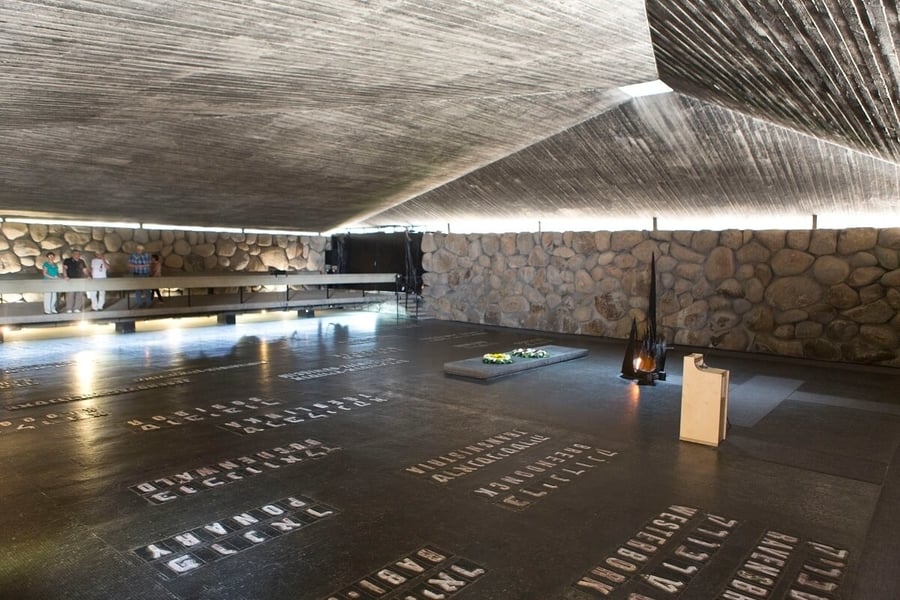
Yad Vashem Holocaust Museum, Jerusalem. Photo credit: © Shutterstock
The Israel Museum
Regarded as one of the world’s leading museums, the Israel Museum offers visitors a slice of fine art, archaeology, ceramics, Jewish culture, a variety of exhibitions. as well as a beautiful Sculpture Garden, guided tours, workshops, a miniature model of the Second Temple and the opportunity of a lifetime - walking through the ‘Shrine of the Book’ building which houses the Dead Sea Scrolls.
Visitors can enjoy art by European and Israeli artists alike, wander through the independent photography department, ponder over drawings and works in the design and architecture section, and take an unparalleled journey into the history and archaeology of the land of Israel.
The Shrine of the Book, housing the scrolls discovered at Qumran (in the Dead Sea region) in 1947 is a highlight for all visitors. The white dome symbolizes the lids of the jars in which the scrolls were discovered and the corridor inside representing the cave itself. The building itself is astonishingly beautiful and considered a triumph by many modern architects.
Fun for the Kids in Jerusalem
If you’re not traveling alone, and need family-friend activities to amuse the kids fear not - there’s the Jerusalem Time Elevator, the Bloomfield Science Museum, the Biblical Zoo, or Aquarium, which youngsters will love. Located in the southwest of the city, the Zoo has all kinds of activities for children including workshops, night tours, and a petting zoo. From elephants and tigers to Ibex and Black Howler Monkeys, it’s got plenty to amuse you for several hours! The Aquarium, next door, is also an ideal place to visit on sweltering summer and rainy winter days since it’s all enclosed.
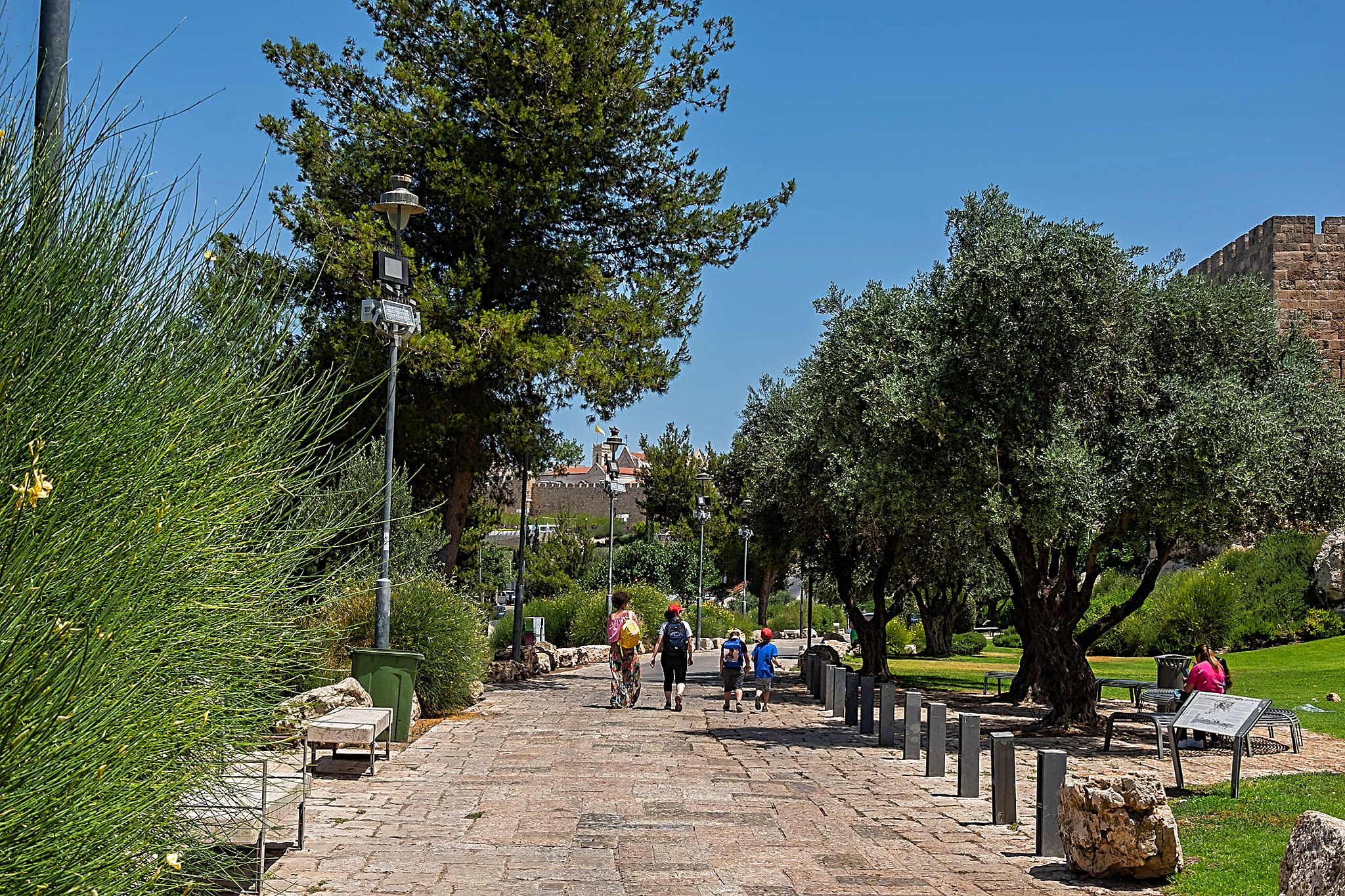
Traveling around Jerusalem with kids. Photo credit: © Dmitry Mishin
Biblical Archaeology in Jerusalem
For anyone interested in biblical archaeology, Jerusalem is a paradise. To get the most out of your time in the city, however, we would recommend joining a tour such as In the Footsteps of Jesus - which includes a visit to the Pools of Bethesda, Church of St. Anne, and the Pater Noster, and a chance to see both the Garden of Gethsemane and the Mount. of Olives.
An Evening at “The Shuk”
After another quick rest, head off for an evening at the lively Mahane Yehuda market, directly off Jaffa Street in the heart of the city. In the last ten years, this has become the hottest spot in town for eating and drinking at night, with all kinds of food (Persian meets tapas meets Italian meets fish and chips), craft beers, and live music.
If you’re lucky enough to be there on Thursdays, you’re in for a treat - it’s packed out but completely atmospheric and provides every visitor to Jerusalem with a snapshot of its inhabitants - old and young, religious and secular, foodie-lover or flaneur! After a fun evening out, go home and sleep. You deserve it, after your action-packed 2-day itinerary in Jerusalem.
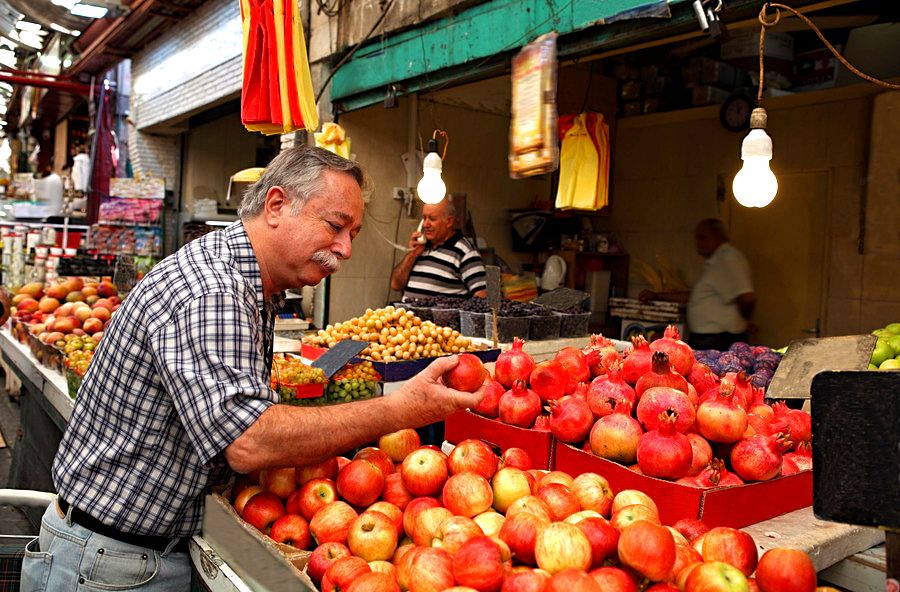
Mahane Yehuda Market. Photo credit: © Dan Porges
 Login / Register
Login / Register
 Contact Us
Contact Us
 Certificate of Excellence
Certificate of Excellence Guaranteed Departure
Guaranteed Departure Low Prices Guaranteed
Low Prices Guaranteed 24/7 Support
24/7 Support




